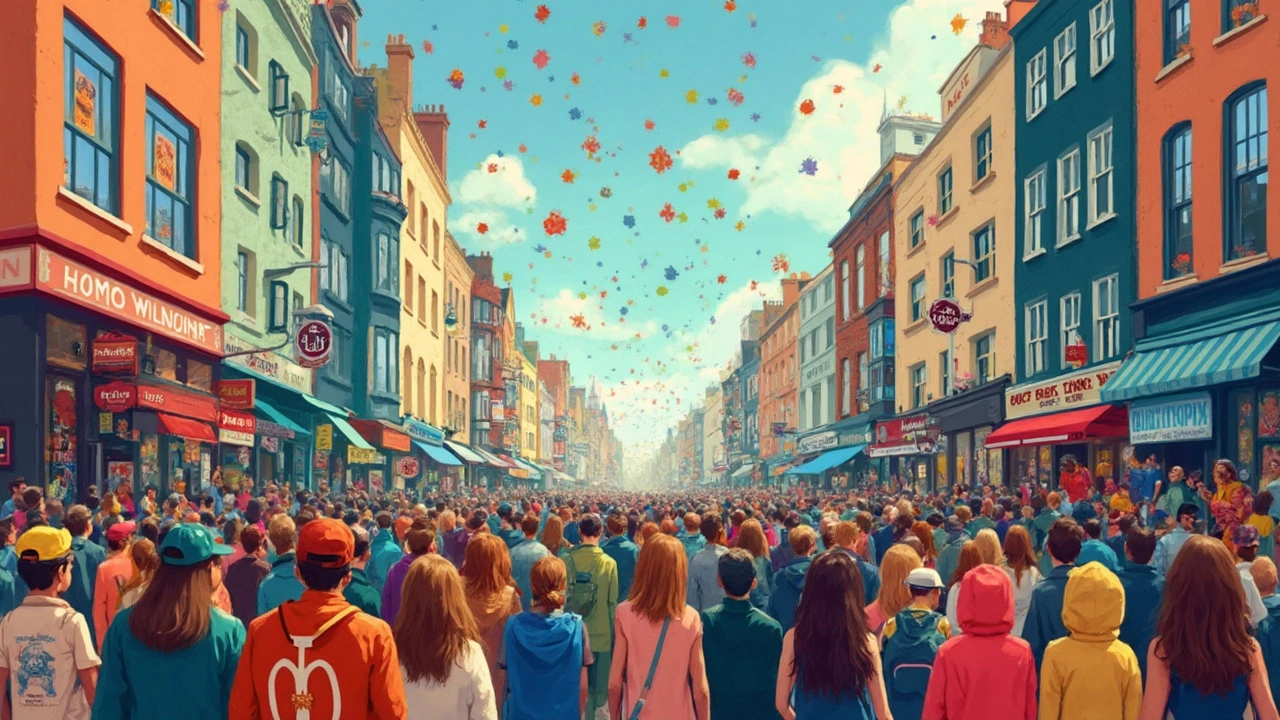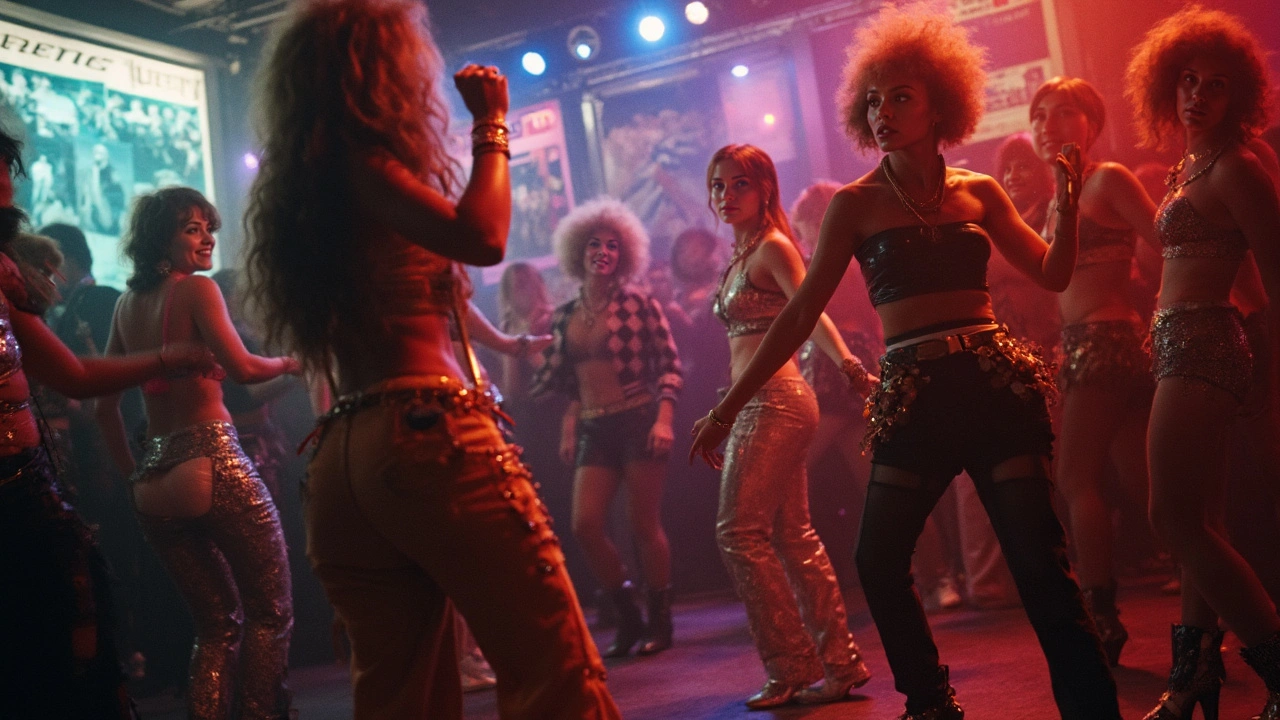Music moves fast. One decade everybody’s grooving to disco, the next, it’s all about grunge or EDM. Why do some genres skyrocket, then just fizzle? Figuring this stuff out isn’t just fun for music nerds—it’s helpful if you want to spot trends, keep your playlists fresh, or even join in as a creator.
Understanding how and why genres rise and fall can seriously upgrade how you find new music and talk about it. Want to know what’s really going on behind the shuffle button? There’s no magic—just people, culture, and a lot of unexpected twists.
- Origins: Where It All Begins
- Peak Popularity: Riding the High
- Changing Tastes: Why Listeners Move On
- The Nostalgia Effect: Comebacks and Revivals
- Tips for Spotting the Next Big Trend
Origins: Where It All Begins
Every music genre starts with some kind of spark. Sometimes it’s a new sound, a bold group of artists, or even just a new way of using old instruments. Take rock and roll, which hit big in the 1950s. It mashed up blues, country, and rhythm & blues (R&B). Elvis Presley, often called the King of Rock, borrowed from African-American music traditions and turned them into a style that felt brand new to white teenagers. Or think about hip-hop’s birth in the Bronx during the 1970s, when big block parties, turntables, and strong storytelling created something totally different from what came before.
It’s not always about inventing entirely new sounds. Pop took elements from jazz and classical before it made its own rules. In the 1980s, electronic music got a push from new gear like Roland drum machines and synthesizers, making genres like house and techno blow up in underground clubs in Chicago and Detroit. That “do-it-yourself” spirit always pushes things forward.
Genres usually explode when they drop into the right place at the right time. Check out this quick timeline of when some big genres first hit the scene:
| Genre | Decade of Origin | Where It Started |
|---|---|---|
| Rock & Roll | 1950s | United States |
| Disco | 1970s | United States |
| Reggae | 1960s | Jamaica |
| Hip-Hop | 1970s | Bronx, New York |
| EDM (Electronic Dance Music) | 1980s | Chicago & Detroit |
Culture and technology drive this stuff, too. Think of the first electric guitar—suddenly you get rock anthems. Or sampling machines in the ’80s making hip-hop and electronic beats more affordable to produce. New tools let artists take risks and mess around with sounds nobody’s heard before. The result? Fresh music genres that grab listeners who want something different from their parents’ playlists.
If you’re curious about where new genres might bubble up next, keep an eye on what young people with cheap gear are making in their bedrooms, garages, or wherever they love to blast music. That’s usually step one on the road from obscurity to the top of the charts.
Peak Popularity: Riding the High
When a music genre blows up, it’s almost impossible to escape. Think of disco clubs booming in the late 1970s, when "Stayin’ Alive" was everywhere and Saturday nights belonged to the dance floor. By 1978, disco singles made up over 40% of Billboard’s Hot 100 chart. That’s wild, right?
Genres hit their peak for a few clear reasons. First off, it’s usually the right sound at the right time. When the world wants to let loose, up pops a new beat that matches the mood. Second, big tech changes—like MTV launching in 1981—can send a genre sky high. Bands like Duran Duran and Madonna got massive because their slick videos looped non-stop on TV.
Let’s not forget about influential artists who embody the genre. Nirvana dropped "Smells Like Teen Spirit" in 1991 and made grunge a global thing. Or how hip-hop started local in the Bronx, but by the mid-90s, rappers like Tupac and Notorious B.I.G. were household names worldwide.
Here’s a quick look at genre popularity with real numbers:
| Genre | Year at Peak | Billboard Hot 100 Share |
|---|---|---|
| Disco | 1978 | 40% |
| Hair Metal | 1988 | 22% |
| Grunge | 1992 | 14% |
| Hip-Hop | 2003 | 29% |
| EDM | 2012 | 16% |
The crazy part? Trends bounce around the globe faster these days. Streaming put K-pop on U.S. radio and TikTok means genres can peak in months, not years. As music journalist Jim Fusilli said:
"When a genre catches fire, it’s not just about the sound. It’s about the moment—social life, technology, and what fans want collide."
So if you spot a certain vibe everywhere—videos, ads, even your aunt’s favorite playlist—it’s probably riding the peak right now.

Changing Tastes: Why Listeners Move On
You know that moment when a song or style just stops clicking? It's not random—listeners shift their tastes fast, even if the music itself doesn't change much. Part of this comes from people wanting something new. Radio killed swing when rock 'n' roll stormed in, and the same thing happened when EDM bumped pop out of music charts in the early 2010s.
Trends tend to burn bright, then burn out. A classic example: disco exploded in the late 1970s, packing stadiums and topping every chart, but by 1980, it had crashed. The famous “Disco Demolition Night” in Chicago, where thousands trashed disco records, didn't just mark an end for disco—it showed how fast a genre could fall out of favor when listeners decide they've had enough.
Listeners’ changing lives and new tech matter, too. Napster and early streaming services let people find underground styles easily. Suddenly, folk, emo, or indie had a shot at fame with zero radio play. Social media now speeds up this cycle. A genre or song can trend on TikTok one week and get skipped the next.
| Genre | Mainstream Peak | Sharp Decline |
|---|---|---|
| Disco | 1977-1979 | 1980 |
| Grunge | 1991-1994 | 1996 |
| Nu Metal | 1999-2002 | 2004 |
| EDM | 2012-2015 | 2017 |
Another reason people move on? Oversaturation. When every song sounds the same, listeners get bored. Late-2000s pop was slammed for this—every track had a "four on the floor" beat, and it got old fast. Even music genres with huge followings can end up shoved to the side by something fresh or weird.
If you want to see what's coming next, keep an ear on younger crowds and meme culture. They’re usually the first to get tired and jump somewhere new.
The Nostalgia Effect: Comebacks and Revivals
Music doesn’t just disappear—it pops back up when you least expect it. Ever notice how eighties synth makes a comeback, or vinyl records start trending again? That’s nostalgia in action. We’re wired to look back on the ‘good old days,’ especially when stuff gets hectic in the world. Suddenly, tunes from years ago feel fresh again.
Take disco, for example. After getting dragged in the ‘Disco Demolition Night’ fiasco in 1979, you’d think it was gone forever. Fast forward to the 2000s and 2010s—Daft Punk and Bruno Mars dropped songs inspired straight from classic disco. People couldn’t get enough. The same goes for pop punk. Blink-182 ruled the early 2000s, disappeared from charts, then made a surprise return as Gen Z latched onto the sound in TikTok videos.
Here are a few real-world comeback stories:
- Vinyl sales shot up in the past decade. In 2023, the Recording Industry Association of America reported vinyl outsold CDs for the first time since 1987.
- Hip-hop sampled old soul records for years. The Notorious B.I.G.'s "Juicy" and Kanye West's early hits reused retro hooks to reach new audiences.
- Even jazz and swing took a spin back into pop culture with movies like "La La Land" and bands like Postmodern Jukebox revamping classic hits.
But why do we love these comebacks? It’s part comfort, part trend. Sometimes new tech helps, like how streaming gives easy access to old music. Social media, from TikTok trends to meme pages, can send an old track viral overnight. For artists, reviving past styles is a risk that can pay off big.
Check out these numbers to see how this all adds up:
| Year | Vinyl Sales (US, in millions) | Disco-Inspired Top 100 Hits |
|---|---|---|
| 2014 | 9.2 | 2 |
| 2018 | 16.8 | 4 |
| 2023 | 43.5 | 7 |
If you want to ride the next big wave, keep an eye on what’s coming back. Scroll your feed, listen to new artists referencing older stars, and don’t be scared to dig through your parents’ record collection. The music genres that faded out last year could be taking over again tomorrow—nostalgia is powerful like that.

Tips for Spotting the Next Big Trend
Spotting the next big thing in music isn't just luck. There’s a pattern to how music genres explode in popularity, and you can absolutely learn how to catch it early. Whether you want to brag about finding that hot new sound before your friends, or you're just curious, let’s break down how to get ahead of the curve.
The secret? Pay attention to where young people share and talk about music. TikTok, Instagram Reels, and even YouTube Shorts are launching unknown songs into the charts overnight. Take "Old Town Road" by Lil Nas X as a real example—what started as a meme on TikTok turned into a worldwide smash.
- music genres that mix styles get noticed fast. When hip-hop and country collided for "Old Town Road," it sounded like nothing else at the time. When you hear artists blending sounds in weird or new ways, that’s a green flag.
- Look for breakout indie tracks blowing up on socials. It happened with Olivia Rodrigo, whose song "drivers license" exploded on TikTok before dominating charts everywhere.
- Notice which scenes or cities are buzzing about a new style. Grunge, for example, bubbled up in small Seattle clubs before taking over in the ‘90s. Right now, you’ll see drill music in the UK, or amapiano from South Africa, making noise beyond their homes.
- Watch how producers and established artists react. If big names start collaborating with newer, niche-sounding acts, it’s often a sign the sound is moving mainstream.
- Don’t skip data—Spotify Wrapped, Billboard’s trending charts, and Apple Music’s playlists regularly highlight what’s spiking in popularity right now.
If you’re the numbers type, here’s a quick look at how quickly new trends can move:
| Song or Genre | Platform That Broke It | Time to Mainstream (Months) |
|---|---|---|
| "Old Town Road" | TikTok | 4 |
| Grunge | Local Seattle radio | 24 |
| K-pop | YouTube | 18 |
| Drill (UK) | SoundCloud/TikTok | 12 |
So, keep an ear on those platforms, notice the mashups, and don’t be afraid to check out what’s trending outside the U.S. Future smash hits are dropping somewhere right now—just not always where you’d expect. That next playlist upgrade might be a tap or a scroll away.

